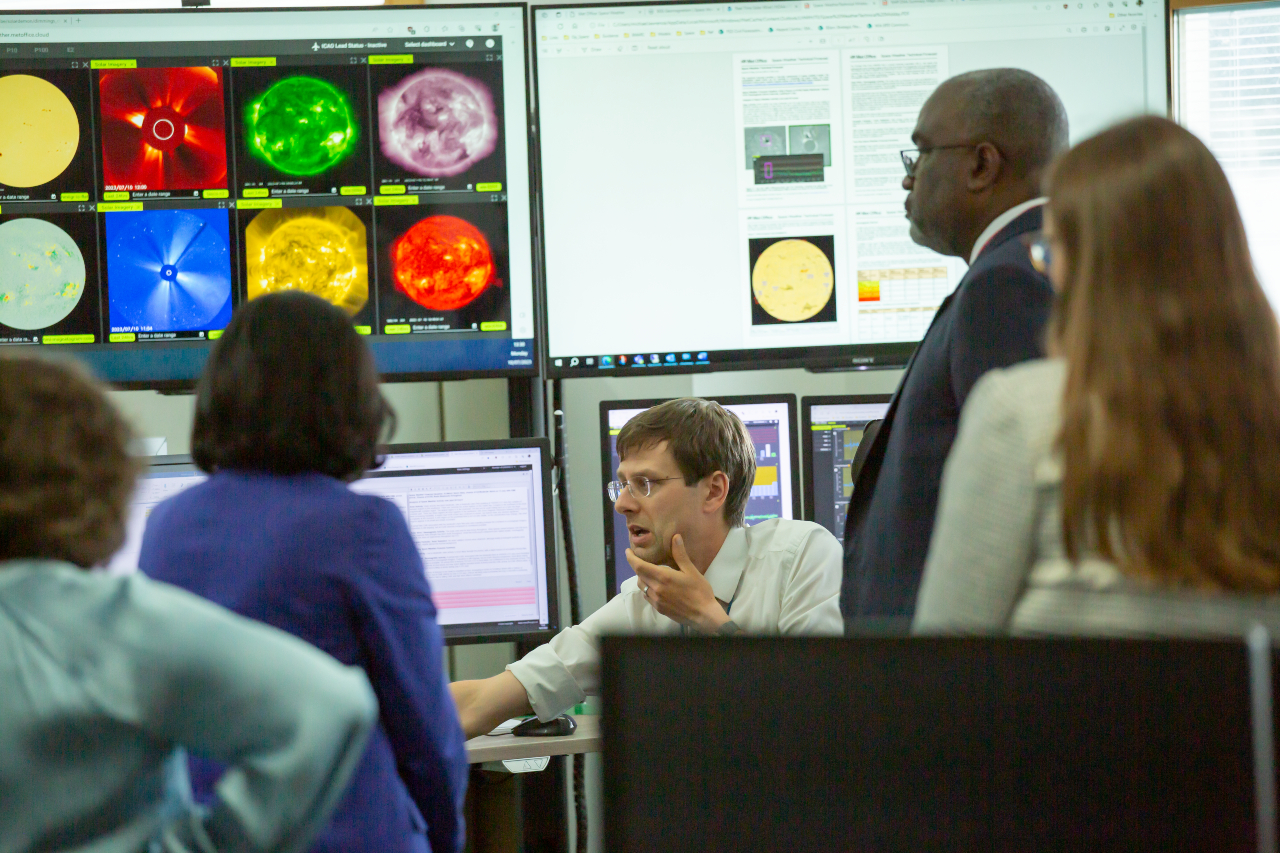Transatlantic data science ties strengthened
Author: Press Office
11:21 (UTC+1) on Wed 2 Aug 2023
The Met Office and NOAA launch a new data science Academy to further scientific collaborations on weather and data science.
A new Transatlantic Data Science Academy (TDSA) will be set up by the Met Office and US counterpart, the National Oceanic and Atmospheric Administration (NOAA). The Academy will develop an international training and skills exchange programme that will provide continued professional development opportunities between the UK and the US.
The Academy will also support student training and exchanges of experts through courses and opportunities to learn earth observation sector skills, such as data processing and data analysis.
The TDSA has been allocated £2.5m by the UK Government, part of a wider £200m investment into the UK earth observation sector to protect UK talent and industry.
Met Office Chief Executive, Prof. Penny Endersby, said: “We’re delighted to work with our US partners to build the skills we will all need to improve weather and climate forecasting for the benefit of all citizens. This Academy will give Met Office and NOAA staff the opportunity to learn alongside each other, and with our academic partner institutions.
“Initiatives like the Transatlantic Data Science Academy are vital to sustain the highly skilled workforce needed to advance the UK earth observation sector into the future, helping people and organisations that use our services to stay safe and thrive.”
Initial phases of work
The first phases of the Academy are being identified; at the Met Office a project has been initiated to help pilot the Academy with three work strands.
The first will help to ensure that exchange processes are in place to make it easy for UK and US staff and students to spend time to work and learn together on common projects using common software. The second will engage the Met Office Academic Partnership (MOAP) to identify courses and build the training element of the Academy. The third will develop a common platform, allowing staff and students to use the same software tools and computing to support the training and exchanges.
Funding through 'Investing in America' agenda
From the other side of the Atlantic, NOAA, as part of the US Department of Commerce, has unveiled a funding opportunity through President Biden’s ‘Investing in America’ agenda for improving numerical weather predictions by establishing a Data Assimilation Consortium. This new consortium will improve NOAA forecast models, provide strategic workforce development in the area of data assimilation, and enhance long-term partnerships between NOAA and those working in academia, government and the broader weather enterprise.
The award will provide up to USD $7 million over three years beginning in 2024, pending the availability of funds. NOAA is currently soliciting collaborative proposals for the project as part of the Inflation Reduction Act of 2022.

Professor Stephen Belcher, Met Office Chief of Science and Technology; Professor Penny Endersby, Met Office Chief Executive and Dr Michael Morgan, NOAA Assistant Secretary of Commerce for Environmental Observation and Prediction. Image: Crown Copyright.
The US multi-university consortium will also advance data assimilation research and education, and foster collaboration, student training and exchange of experts between NOAA and the Joint Center for Satellite Data Assimilation (JCSDA), academic partners including minority serving institutions, and through participation in the TDSA.
“Advancing data assimilation is essential to improving our forecasts,” said Assistant Secretary of Commerce for Environmental Observation and Prediction, Michael C. Morgan, Ph.D. “The partnership between the US and the UK in training the next generation of diverse data assimilation scientists will serve to accelerate advances in forecast skill so vital for the extreme weather challenges facing communities across the globe.”

Dr Morgan is shown the Space Weather capability at the Met Office HQ. Image: Crown Copyright.





